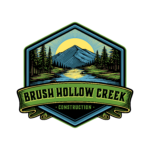When it comes to Mountain home building plans a dream retreat in the mountains, every detail matters—from the positioning of windows to frame breathtaking views to the materials used to weather high-altitude climates. If you’re ready to build your perfect getaway, understanding mountain home building plans is your crucial first step.
In this guide, we’ll explore what makes mountain home designs special, the key considerations before construction, and how to select the best building plan to fit your lifestyle and environment.
What Are Mountain Home Building Plans?
Mountain home building plans are detailed architectural blueprints specifically designed for homes located in mountainous or high-altitude terrain. These plans account for unique challenges like steep slopes, heavy snowfall, and remote locations. Whether you’re dreaming of a cozy log cabin or a modern luxury lodge, these designs combine aesthetics, functionality, and structural integrity to meet the demands of mountain living.
Why Choose a Mountain Home building plans
There’s a reason so many homeowners are drawn to mountain properties:
- Breathtaking Views: Mountain homes are often strategically placed to maximize views of valleys, peaks, rivers, and forests.
- Peace and Privacy: Remote locations offer a tranquil lifestyle away from the hustle of urban areas.
- Recreation Opportunities: Whether you enjoy hiking, skiing, fishing, or wildlife watching, a mountain home puts nature at your doorstep.
- Investment Potential: Well-designed mountain homes often appreciate in value, especially in high-demand recreational or tourist areas.
Key Elements of Mountain Home Building Plans
Designing a mountain home involves more than just aesthetics. Here’s what makes these plans stand out:
1. Topography Integration
Mountain home building plans sites rarely have flat ground. A well-crafted plan works with the natural slope, often incorporating walkout basements, multi-level terraces, or split-level designs build your dream home to make the most of the terrain.
2. Weather-Resistant Features
High elevations bring harsh conditions: snow, wind, and fluctuating temperatures. Plans typically include:
- Steeply pitched roofs to shed snow
- Strong foundations for stability on slopes
- Durable siding like stone, wood, or fiber cement
3. Energy Efficiency
Due to remoteness, many mountain homes are off-grid or rely on sustainable energy:
- South-facing windows for passive solar heating
- Extra insulation
- Geothermal or solar systems
4. Natural Materials
To blend with the surroundings, most mountain home building plans feature wood beams, stone fireplaces, exposed trusses, and large glass panels to bring the outside in.
Types of Mountain Home building plans style
Mountain homes come in many shapes and sizes. Depending on your taste, here are some popular styles:
Rustic Log Cabins
Traditional and cozy, these cabins use whole logs or log siding. Perfect for those looking for a classic, natural feel.
Craftsman-Style Homes
Featuring handcrafted stonework, tapered columns, and exposed rafters, these homes balance rustic charm with modern comforts.
Modern Mountain Homes
Think sleek lines, floor-to-ceiling windows, and open floor plans. These homes are perfect for homeowners who want contemporary luxury with mountain charm.
A-Frame Cabins
Compact and efficient, A-frame homes are ideal for vacation retreats or minimalist living, especially in snowy regions.
Choosing the Right Mountain Home Building Plans
With thousands of designs available, how do you pick the right one? Consider these factors:
1. Lot Size and Orientation
Review your land’s dimensions, slope, and orientation. This will influence the layout, number of levels, and window placement.
2. Climate and Elevation
The higher the elevation, the more you’ll need to focus on insulation, heating, and structural integrity against wind and snow.
3. Usage: Vacation vs. Full-Time
Are you building a seasonal escape or a year-round residence? Vacation homes may be smaller and simpler, while full-time residences need space for storage, work-from-home options, and more comfort amenities.
4. Permits and Local Regulations
Mountain zones often have specific building codes. Work with a local architect or contractor familiar with zoning, wildlife protection, and fire safety requirements.
5. Budget
Custom mountain homes can be expensive, especially on sloped lots. Having a clear budget helps you prioritize design features and construction phases.
Custom vs. Pre-Designed Mountain Home Plans
You have two primary options when it comes to mountain home building plans: purchasing a pre-designed plan or hiring a professional to create a custom design.
Pre-Designed Plans:
- Cost-effective
- Faster timeline
- Ideal for buyers with standard needs
Custom Plans:
- Tailored to your land, lifestyle, and preferences
- Greater control over materials, features, and aesthetics
- Better suited for complex lots or unique architectural visions
Smart Design Features for Mountain Home building plans
Here are some must-have features to consider including in your home building plans:
- Mudrooms: A transitional space for removing boots, coats, and gear before entering the main living area.
- Wraparound Decks: Enjoy panoramic views from multiple angles.
- Lofts or Open Beams: Adds rustic character and provides flexible space.
- Large Fireplaces: Essential for warmth and ambiance during snowy nights.
- Panoramic Windows or Skylights: Brighten the space and frame nature like art.
Construction Tips for Mountain Homes
Once your plans are ready, it’s time to build. Keep these tips in mind:
Hire a Local Builder
Choose a contractor familiar with the local climate and permitting process. They’ll understand the specific engineering needs for mountain conditions.
Plan for Accessibility
Remote locations can be tricky for material delivery and worker access. Plan ahead for transportation and storage.
Think Long-Term
Choose durable materials and energy-efficient systems that reduce maintenance and operating costs over time.
Common Mistakes to Avoid
While designing and building a mountain home is exciting, avoid these common pitfalls:
- Ignoring the View: Always design your living spaces around the best views and natural light.
- Underestimating Snow Load: Roofs must be engineered to handle heavy snowfall.
- Poor Drainage Planning: Sloped lots need solid drainage plans to prevent erosion or water damage.
- Skipping Soil Testing: Don’t build without knowing your foundation conditions.
Final Thoughts:
Your mountain home should be a sanctuary—a place where you reconnect with nature, relax, and make lasting memories. With the right mountain home building plans, you lay the foundation for a structure that is both beautiful and resilient.
Whether you’re browsing rustic cabin layouts or commissioning a custom luxury retreat, focus on designs that match your land, climate, and lifestyle. Don’t rush the process. Carefully planning your mountain home will ensure it stands strong for generations.

